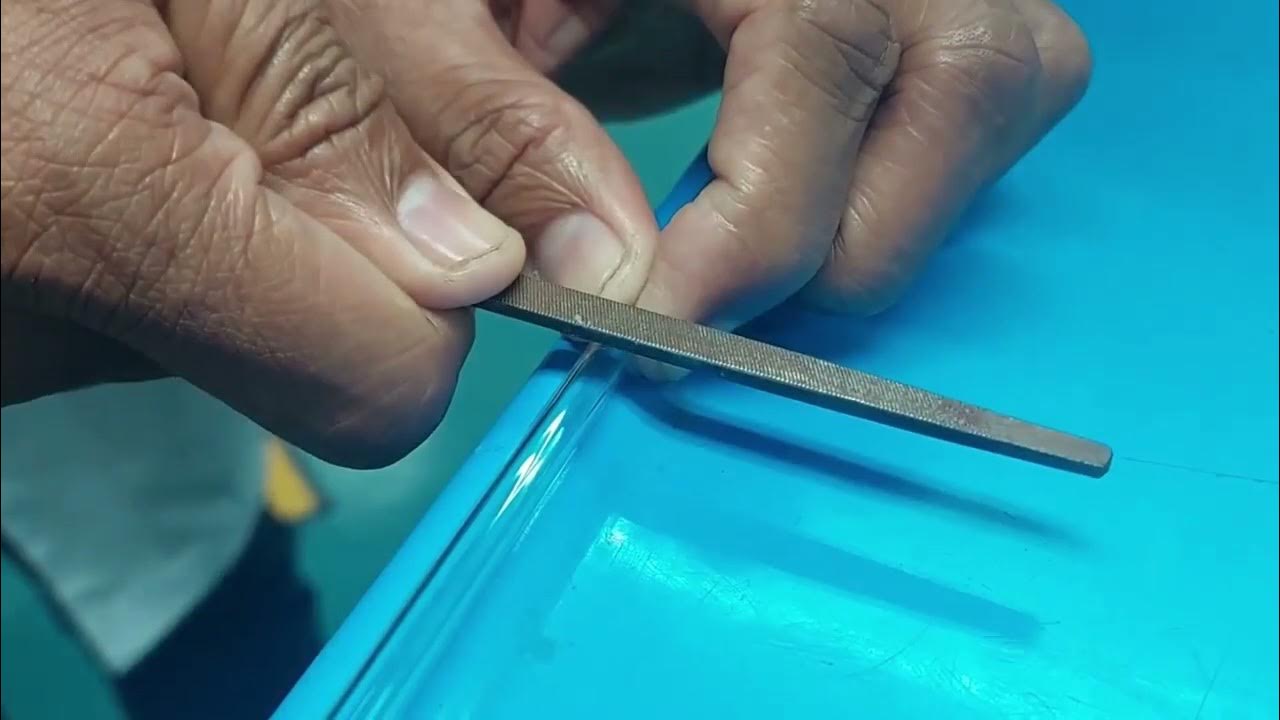POLISHING
Summary
TLDRThis tutorial video provides a detailed guide on how to polish restaurant equipment such as silverware, chinaware, and glassware. It emphasizes the importance of cleanliness and proper polishing techniques to ensure a sparkling, professional appearance before serving. The video covers key steps such as washing, using hot water, adding lemon juice, and polishing with soft, absorbent cloths. It also highlights the criteria for achieving a perfect shine, including ensuring no water spots, fingerprints, or residue remain. The tutorial is designed to help staff maintain high standards in restaurant presentation.
Takeaways
- 😀 Polishing is the process of cleaning and shining restaurant equipment, aimed at making utensils ready for use or storage.
- 😀 The utensils must first go through a dishwashing process before polishing.
- 😀 Hot water is used during polishing to kill any remaining germs and bacteria on the utensils.
- 😀 Lemon juice helps to dissolve grease and oils that may still be on the utensils.
- 😀 Soft, dry towels like kitchen towels are recommended for polishing to prevent scratching the surfaces.
- 😀 After polishing, the surface of the utensil should not be touched by hands to maintain its shine.
- 😀 Silverware polishing involves categorizing items, preparing hot water, and adding lemon juice to a stainless steel basin.
- 😀 For chinaware, only half of the item should be submerged in hot water at a time, and polishing is done using kitchen towels until it shines.
- 😀 Glassware polishing requires using hot water to create steam, and towels should be used to polish the glass until it gleams.
- 😀 Key rules for polishing silverware include ensuring no water spots, creating a perfect reflection, and achieving a shiny finish.
- 😀 Polishing chinaware requires it to be dry, free from water spots, and produce a clear sound when rubbed, signifying readiness.
- 😀 Glassware polishing ensures no water spots or fingerprints are left, with the surface remaining clear and shiny.
Q & A
What is the purpose of polishing in restaurant equipment?
-Polishing aims to clean, shine, and smooth the surfaces of dining equipment, ensuring they are properly prepared for use or storage.
What should be done before starting the polishing process?
-The dishware should have already gone through the dishwashing process, and hot water should be used to kill any remaining germs and bacteria.
Why is lemon juice added during the polishing process?
-Lemon juice helps dissolve grease or oil residues still present on the equipment, making it easier to polish.
What type of cloth is recommended for polishing?
-A dry, soft, and absorbent cloth like a kitchen towel or glass towel is ideal for polishing to avoid scratching the surface.
Why should polished items not be touched with bare hands?
-Touching polished items with hands can leave fingerprints or blemishes, compromising the quality of the polish.
How should silverware be polished?
-Silverware should be soaked in hot water with lemon juice, then individually polished using a towel until shiny, making sure to handle it by the handles.
What are the different types of chinaware mentioned, and how is it polished?
-Chinaware includes items like cups, pots, and plates. It should be soaked halfway in hot water with lemon juice, then polished with a towel, repeating the process for the other half.
How is glassware polished differently from other items?
-Glassware, including both stemmed and non-stemmed types, should be exposed to hot steam, and then polished with a kitchen towel until shiny, making sure there are no water marks or fingerprints.
What are the key criteria for properly polished silverware?
-Properly polished silverware should be dry, free of water spots, and should reflect a perfect mirror image when viewed.
What is the sound that indicates proper polishing of chinaware?
-Properly polished chinaware will make a clear, sharp sound when rubbed with a finger, indicating that the surface is smooth and clean.
Outlines

此内容仅限付费用户访问。 请升级后访问。
立即升级Mindmap

此内容仅限付费用户访问。 请升级后访问。
立即升级Keywords

此内容仅限付费用户访问。 请升级后访问。
立即升级Highlights

此内容仅限付费用户访问。 请升级后访问。
立即升级Transcripts

此内容仅限付费用户访问。 请升级后访问。
立即升级浏览更多相关视频

Tata Boga kelas XI semester 1 Tata Hidang Table Setting

TABLE SET UP - Food and Beverages Service

FSM3401 - American Service Table Setup

Media Pembelajaran Materi Polishing F&B Service Restaurant SMK Werdhi Sila Kumara

BASIC SCIENCE LABORATORY TECHNIQUES: Glass Manipulation

Everything You Need to Know About Fine Dining | Food Network
5.0 / 5 (0 votes)
